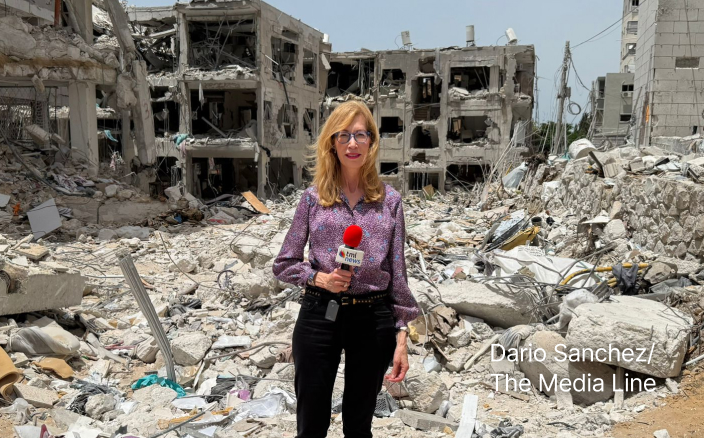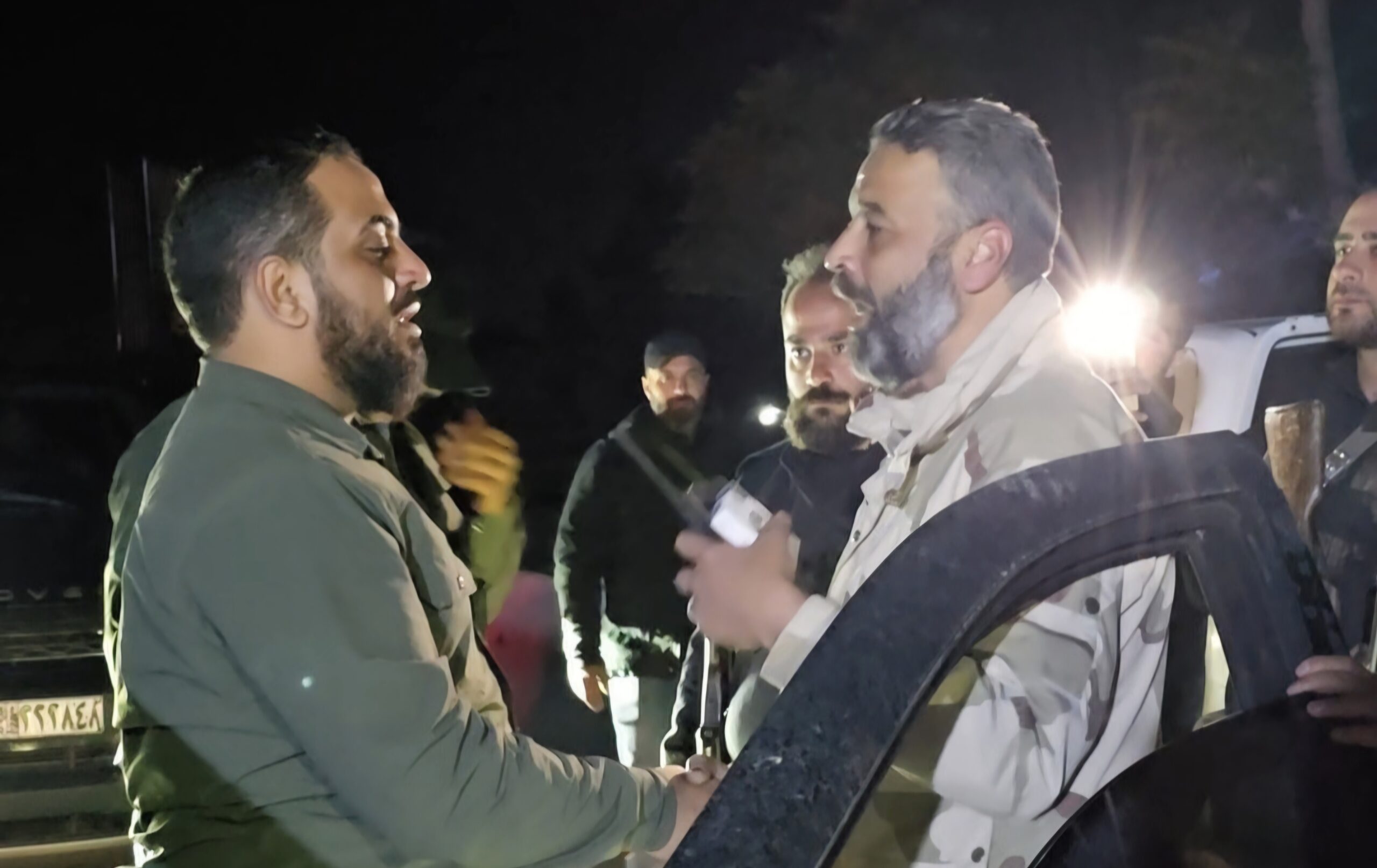Syria Reaches Disarmament Deals in Jaramana and Sweida After Israeli Strikes
Damascus secures weapons handover deals with Druze leaders in two flashpoint regions after Israeli drone strikes and warnings about protecting minorities
[Damascus] In an unprecedented development since the start of the Syrian uprising in 2011, the Syrian government, led by President Ahmed al-Sharaa, announced on Thursday that it had reached two separate agreements: one with community leaders in the city of Jaramana, and another with local military and religious figures in the southern province of Sweida. The deals call for the immediate surrender of medium and heavy weapons to the state and an increased deployment of army and security forces in both areas in an effort to restore security and contain rising sectarian tensions.
Preemptive Moves Against Chaos
The agreement in Jaramana, a predominantly Druze suburb east of Damascus, followed several days of deadly unrest that left 12 people dead in sectarian clashes between Druze fighters and Sunni Muslim residents. The violence was triggered by the circulation of a voice recording deemed offensive to the Prophet Muhammad, allegedly made by a young man from the Druze community. The incident sparked widespread outrage and a series of violent confrontations, including the appearance of unidentified armed groups in the city’s outskirts—a haunting reminder of Syria’s sectarian civil war.
Hussam al-Tahan, the head of security in rural Damascus, told The Media Line that the Jaramana agreement stipulates “the immediate handover of heavy weapons and unlicensed personal arms, and restricting the use of force to official state authorities only.” The deal also includes the expansion of security checkpoints and the deployment of Ministry of Defense units along the city’s borders and agricultural periphery.
The immediate handover of heavy weapons and unlicensed personal arms, and restricting the use of force to official state authorities only
In parallel, Druze religious and political leaders in Sweida convened a broad meeting at the sacred Ayn al-Zaman site—the spiritual headquarters of the Druze community—and reached a similar agreement. The Sweida deal calls for a “complete disarmament,” restoring full control to state forces over security installations within the city. Additionally, a “local auxiliary army” will be formed under the Ministry of Defense, composed exclusively of Sweida residents and led by two widely respected figures: Suleiman Abdel-Baqi and Yahya al-Hajjar. Both are considered untainted by the bloodshed of previous conflicts, according to sources familiar with the negotiations.
The shift signals a growing willingness among local stakeholders to restore order, especially after years of lawlessness turned parts of Sweida into a haven for kidnapping rings and narcotics traffickers following the retreat of state institutions from the region.
Israeli Warnings and Regional Escalation
These developments unfolded against the backdrop of heightened regional tensions. On Wednesday morning, the Israeli military issued a rare statement announcing it had carried out a “preemptive drone strike” targeting what it called an “extremist group” planning to attack the Druze minority in the town of Sahnaya, near Damascus.
Israel described the operation as “a preventative measure to protect the Druze community in Syria,” warning the Syrian regime against permitting any aggression toward “historically protected ethnic or religious minorities” in the region. The statement was widely interpreted as a veiled reference to the Druze, a community that maintains a complex but historically cooperative relationship with the Israeli military, particularly in the occupied Golan Heights.
Give the gift of hope
We practice what we preach:
accurate, fearless journalism. But we can't do it alone.
- On the ground in Gaza, Syria, Israel, Egypt, Pakistan, and more
- Our program trained more than 100 journalists
- Calling out fake news and reporting real facts
- On the ground in Gaza, Syria, Israel, Egypt, Pakistan, and more
- Our program trained more than 100 journalists
- Calling out fake news and reporting real facts
Join us.
Support The Media Line. Save democracy.


Syria’s Interior Ministry later confirmed that Sahnaya had been hit by two Israeli drones, injuring several individuals—mostly members of the General Security Directorate. The strikes triggered an official outcry from Damascus, which labeled them a “new violation of Syrian sovereignty.” Israel has withheld further details about the operation.
Sectarian Tensions as Political Fuel
These security arrangements are unfolding at a time of profound vulnerability for Syria’s southern provinces. Sweida, once known for its relative calm and detachment from the main conflict, has in recent months seen an uptick in protests over government corruption and economic deterioration, along with a rise in localized armed factions exploiting the security vacuum.
Jaramana, on the other hand, presents a volatile microcosm of Syria’s sectarian mosaic. The recent unrest underscores how minor provocations can rapidly ignite into large-scale violence, especially in areas with a sensitive demographic mix of Sunnis and Druze.
Whenever the state fails to provide security and basic services, sectarian identities come rushing back to fill the void
Speaking to The Media Line, Syrian political analyst Tarek Youssef said: “Whenever the state fails to provide security and basic services, sectarian identities come rushing back to fill the void. That’s the most dangerous part of the Syrian crisis today.”
He added that even limited Israeli intervention “gives hard-liners within the regime an excuse to intensify their security presence under the banner of ‘protection,’ but in reality, it deepens the sectarian divide.”
Calls for Calm, Fears of a Lebanese Scenario
In an attempt to de-escalate the situation, the Druze leadership in Sweida—the “Sheikhdom of the Unitarian Druze Muslims”—issued a statement welcoming the disarmament agreement, affirming that the initiative stemmed from “Arab nationalist and Islamic values” and rejecting “any calls for separatism or violence.” Separately, Sheikh Karim Rajeh, the most senior Sunni religious figure in Damascus, urged followers to “defend the Prophet Muhammad with wisdom and calm—not with weapons.”
Defend the Prophet Muhammad with wisdom and calm—not with weapons.
Despite these appeals, fears of renewed chaos remain high. Weapons are still widely circulated, and Syria’s fractured social fabric is crisscrossed with invisible sectarian fault lines, any of which could erupt without sustained reconciliation efforts.

A reconciliation that took place in Jaramana, Syria, May 1, 2025. (Rizik Alabi/The Media Line)
Observers warn that Syria is increasingly resembling a fragmented Lebanon-style system, where communities coexist under uneasy truces maintained by localized armed groups, while the central government exercises nominal authority at best.
What Comes After the Weapons?
Key questions remain: Can Damascus genuinely enforce these agreements? Could this model be replicated in other restive areas? Or are these accords merely temporary ceasefires, convenient stopgaps before the next eruption of violence?
For now, Syria seems to be entering a new phase—where local unrest, sectarian grievances, and regional dynamics intertwine in unpredictable ways. The new chapter is not being written with hope, but with caution—and fear.

